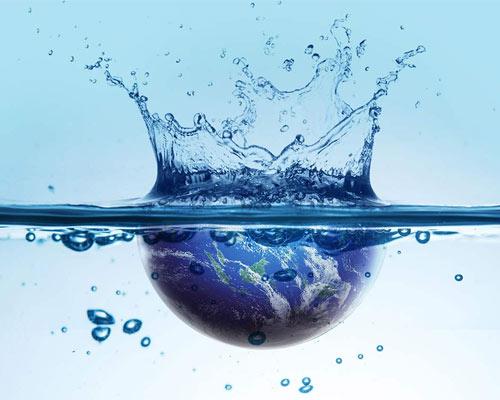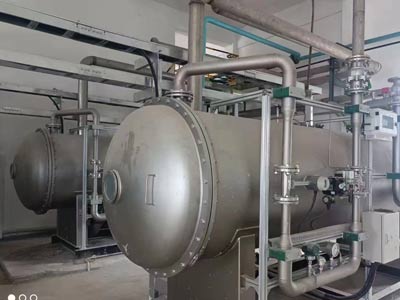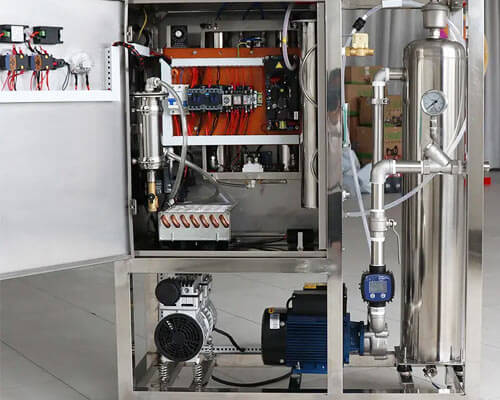Array
(
[id] => 4076
[site_id] => 1
[project_id] => 478
[cate_id] => 793
[thumb] => Array
(
[id] => 3679
[cate_id] => 1
[folder] => res/202307/06/
[name] => 9b8ca4fa0a9dbd6f.jpg
[ext] => jpg
[filename] => res/202307/06/9b8ca4fa0a9dbd6f.jpg
[ico] => res/_cache/_ico/36/3679.jpg
[addtime] => 1688634372
[title] => electrolytic-ozone-generator
[attr] => Array
(
[width] => 500
[height] => 400
)
[note] =>
[session_id] =>
[user_id] => 0
[download] => 0
[admin_id] => 1
[mime_type] => image/jpeg
[gd] => Array
(
[auto] => res/_cache/auto/36/3679.jpg
[thumb] => res/_cache/thumb/36/3679.jpg
)
)
[content] => electro (electro)dissolving (loosening) - loosening by means of electricity. Electrolysis separates the oxygen atoms from the hydrogen pairs in the water molecules.
[**]ll ozone is made of oxygen. Electrolytic ozone generators generate ozone from oxygen atoms in water molecules (H2O). When the metal electrodes are immersed in water and separated from each other, the energy generated by the low-voltage direct current through the water splits the water molecules into hydrogen and oxygen. Hydrogen (H2) gas floats up from the negative electrode, and oxygen atoms combine in pairs (O2) to float up from the positive electrode. Electrical energy is stored as chemical energy in the form of a mixture of hydrogen and oxygen. This energy can be released again when an ignition source causes the hydrogen and oxygen to combine, releasing heat in an explosion.

It takes a special catalyst and some extra energy at electrodes in water to induce the three oxygen atoms to combine to form ozone. Electrolytic ozone generation technology focuses on the molecular structure of the electrodes rather than the mechanical and electrical technology of corona discharge generators, pumps and venturis. Exactly how the catalyst's molecular structure brings oxygen atoms together to form ozone is complicated. Catalyst formulations continued to be developed and the secret of success kept secret. Under the action of a catalyst, individual oxygen atoms are pulled apart by electrical energy and combine to form ozone. This ozone readily dissolves into the surrounding water to form ozonated water.
Since the electrolytic ozone forming technology is molecular, the equipment can be very small. [**]ll that is required is a simple DC power source and a piece of electrode material. Typically an electrolytic ozone generator can be powered by batteries or by a 12 volt transformer. [**] small bucket of ozone water will be provided within minutes. However, it is not yet suitable for large-scale industrial use.
It is commonly used in industry to soak ozone gas in water with a diffuser, or to inject it into water with a Venturi tube. This process requires a pump, ozone gas generator, diffuser and venturi.

How to detect and control the ozone concentration during the water treatment of the ozone generator?
When the ozone generator is used for water treatment, it is necessary to detect the outlet concentration of the ozone generator, the oxygen concentration between the ozone, the ozone concentration between the ozone, and the concentration of the ozone tail gas. The regulations are as follows:

1. The ozone water treatment project should determine the appropriate detection instrument and control system according to the capacity, quantity and characteristics of the project's oxygen source system, ozone generating device, dosing device and exhaust gas elimination device.
2. The detection instrument and control system should satisfy the safety and reliability of production operation, and take into account the convenience and flexibility of operation management.
3. The ozone generation room must be equipped with ambient ozone and oxygen concentration monitoring instruments to monitor the indoor ozone and oxygen concentration, and be linked with the indoor ventilation system through the automatic control system. The ambient oxygen concentration monitoring instrument should be installed under the main oxygen intake pipe, and the ambient ozone concentration instrument should be installed under the ozone generator.

4. The oxygen pressure and the ozone concentration and flow rate produced by the ozone generator should be tested in the ozone generation room. The measurement of the gas phase ozone concentration should be monitored online by an ultraviolet absorption spectrophotometer.
5. The ozone contact pool should detect the concentration of residual ozone in the water and the ozone concentration of the treated tail gas. The pre-ozone contact pool may not be equipped with a residual ozone concentration detection device in water, but a sampling point shall be provided. The water outlet of the rear ozone contact pool should be equipped with a residual ozone detection device in the water, and the concentration of residual ozone in the water should be monitored online with a diaphragm electrode method instrument.
[Explanation of the article] There are many organic substances in the pre-ozone pool, and the ozone is depleted quickly. It is usually difficult to measure the residual ozone data in the effective water. Therefore, automatic instruments for residual ozone concentration in water may not be provided.

6. For the sampling of residual ozone in the ozone contact pool, a sampling pump should be installed to ensure the operating pressure of the instrument. When the water quality does not meet the requirements of the meter, a filter device that removes impurities in the water should be considered.
7. The top of the ozone contact pool should be equipped with an automatic metering device for ozone mass flow and an automatic adjustment device for ozone flow to adjust the total amount of ozone in the water in real time.
8. Ozone tail gas discharge port should detect the concentration of ozone tail gas, and the concentration of ozone tail gas emission should be <0.1ppm.
To detect the ozone concentration in different locations, the detectors are also different. To detect the concentration at the outlet of the ozone generator, an ozone detector is required. Oxygen detector, ozone tail gas concentration detection is equipped with an ozone online detector with a range of 0-20mg/L.
[parent_id] => 0
[module_id] => 114
[title] => What is an water electrolytic ozone generator? How does it work?
[dateline] => 1688634333
[lastdate] => 1688634374
[sort] => 0
[status] => 1
[hidden] => 0
[hits] => 2596
[tpl] =>
[seo_title] => What is an water electrolytic ozone generator-How does it work
[seo_keywords] => electrolytic ozone generator, water electrolytic ozone generator
[seo_desc] => It takes a special catalyst and some extra energy at electrodes in water to induce the three oxygen atoms to combine to form ozone. Electrolytic ozone generation technology focuses on the molecular structure of the electrodes rather than the mechanical an
[tag] => Array
(
[0] => Array
(
[id] => 35
[site_id] => 1
[identifier] =>
[title] => ozone water treatment
[url] => https://healthept.com/tag/35
[target] => _self
[hits] => 1335
[alt] => ozone water treatment
[is_global] => 0
[replace_count] => 0
[seo_title] =>
[seo_keywords] =>
[seo_desc] =>
[tpl] =>
[title_id] => c793
[html] => ozone water treatment
)
[1] => Array
(
[id] => 100
[site_id] => 1
[identifier] =>
[title] => Water treatment case
[url] => https://healthept.com/tag/100
[target] => _self
[hits] => 1526
[alt] => Water treatment case
[is_global] => 0
[replace_count] => 0
[seo_title] =>
[seo_keywords] =>
[seo_desc] =>
[tpl] =>
[title_id] => c793
[html] => Water treatment case
)
[2] => Array
(
[id] => 101
[site_id] => 1
[identifier] =>
[title] => ozone case
[url] => https://healthept.com/tag/101
[target] => _self
[hits] => 1521
[alt] => ozone case
[is_global] => 0
[replace_count] => 0
[seo_title] =>
[seo_keywords] =>
[seo_desc] =>
[tpl] =>
[title_id] => c793
[html] => ozone case
)
)
[attr] =>
[replydate] => 0
[user_id] => 0
[identifier] => electrolyticozone
[integral] => 0
[style] =>
[url] => https://healthept.com/electrolyticozone.html
[_catelist] => Array
(
[793] => Array
(
[id] => 793
[site_id] => 1
[parent_id] => 736
[status] => 1
[title] => Water treatment
[taxis] => 10
[tpl_list] =>
[tpl_content] =>
[psize] => 0
[seo_title] => Ozone Water treatment case article
[seo_keywords] => Ozone Water treatment , Water treatment case,Ozone Water treatment article
[seo_desc] => Share more articles about ozone, oxygen production, farms, sewage water treatment cases.KQ Environmental Tech shares useful articles and blogs related to Ozone water treatment.
[identifier] => water-treatment
[tag] => Ozone Water treatment , Water treatment case, ozone case
[style] =>
[module_id] => 0
[psize_api] => 0
[url] => https://healthept.com/Case/water-treatment.html
)
)
)
electro (electro)dissolving (loosening) - loosening by means of electricity. Electrolysis separates the oxygen atoms from the hydrogen pairs in the water molecules.
[**]ll ozone is made of oxygen. Electrolytic ozone generators generate ozone from oxygen atoms in water molecules (H2O). When the metal electrodes are immersed in water and separated from each other, the energy generated by the low-voltage direct current through the water splits the water molecules into hydrogen and oxygen. Hydrogen (H2) gas floats up from the negative electrode, and oxygen atoms combine in pairs (O2) to float up from the positive electrode. Electrical energy is stored as chemical energy in the form of a mixture of hydrogen and oxygen. This energy can be released again when an ignition source causes the hydrogen and oxygen to combine, releasing heat in an explosion.

It takes a special catalyst and some extra energy at electrodes in water to induce the three oxygen atoms to combine to form ozone. Electrolytic ozone generation technology focuses on the molecular structure of the electrodes rather than the mechanical and electrical technology of corona discharge generators, pumps and venturis. Exactly how the catalyst's molecular structure brings oxygen atoms together to form ozone is complicated. Catalyst formulations continued to be developed and the secret of success kept secret. Under the action of a catalyst, individual oxygen atoms are pulled apart by electrical energy and combine to form ozone. This ozone readily dissolves into the surrounding water to form ozonated water.
Since the electrolytic ozone forming technology is molecular, the equipment can be very small. [**]ll that is required is a simple DC power source and a piece of electrode material. Typically an electrolytic ozone generator can be powered by batteries or by a 12 volt transformer. [**] small bucket of ozone water will be provided within minutes. However, it is not yet suitable for large-scale industrial use.
It is commonly used in industry to soak ozone gas in water with a diffuser, or to inject it into water with a Venturi tube. This process requires a pump, ozone gas generator, diffuser and venturi.

How to detect and control the ozone concentration during the water treatment of the ozone generator?
When the ozone generator is used for water treatment, it is necessary to detect the outlet concentration of the ozone generator, the oxygen concentration between the ozone, the ozone concentration between the ozone, and the concentration of the ozone tail gas. The regulations are as follows:

1. The ozone water treatment project should determine the appropriate detection instrument and control system according to the capacity, quantity and characteristics of the project's oxygen source system, ozone generating device, dosing device and exhaust gas elimination device.
2. The detection instrument and control system should satisfy the safety and reliability of production operation, and take into account the convenience and flexibility of operation management.
3. The ozone generation room must be equipped with ambient ozone and oxygen concentration monitoring instruments to monitor the indoor ozone and oxygen concentration, and be linked with the indoor ventilation system through the automatic control system. The ambient oxygen concentration monitoring instrument should be installed under the main oxygen intake pipe, and the ambient ozone concentration instrument should be installed under the ozone generator.

4. The oxygen pressure and the ozone concentration and flow rate produced by the ozone generator should be tested in the ozone generation room. The measurement of the gas phase ozone concentration should be monitored online by an ultraviolet absorption spectrophotometer.
5. The ozone contact pool should detect the concentration of residual ozone in the water and the ozone concentration of the treated tail gas. The pre-ozone contact pool may not be equipped with a residual ozone concentration detection device in water, but a sampling point shall be provided. The water outlet of the rear ozone contact pool should be equipped with a residual ozone detection device in the water, and the concentration of residual ozone in the water should be monitored online with a diaphragm electrode method instrument.
[Explanation of the article] There are many organic substances in the pre-ozone pool, and the ozone is depleted quickly. It is usually difficult to measure the residual ozone data in the effective water. Therefore, automatic instruments for residual ozone concentration in water may not be provided.

6. For the sampling of residual ozone in the ozone contact pool, a sampling pump should be installed to ensure the operating pressure of the instrument. When the water quality does not meet the requirements of the meter, a filter device that removes impurities in the water should be considered.
7. The top of the ozone contact pool should be equipped with an automatic metering device for ozone mass flow and an automatic adjustment device for ozone flow to adjust the total amount of ozone in the water in real time.
8. Ozone tail gas discharge port should detect the concentration of ozone tail gas, and the concentration of ozone tail gas emission should be <0.1ppm.
To detect the ozone concentration in different locations, the detectors are also different. To detect the concentration at the outlet of the ozone generator, an ozone detector is required. Oxygen detector, ozone tail gas concentration detection is equipped with an ozone online detector with a range of 0-20mg/L.





